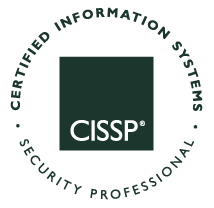Fix for Non-Responsive WSUS Clients
WSUS 2.0 Behavior of WUAU
The WSUS 2.0 version of WUAU is version 5.8.0.2607. This version has an issue that causes the CPU to race to 98-100% utilization and causes the machine to become unresponsive during the WUAU detection cycle. The cycle normally runs for about 2 minutes.
The Windows Update Automatic Update service (WUAUSERV) runs under the SVCHOST process, along with many other processes. If you look in Task Manager you may see 5-8 processes named SVCHOST.EXE. To determine which process is running WUAU, enter TASKLIST /SVC at the CMD prompt. Output will look like this:
Image Name PID Services
========================= ====== ============================================
System Idle Process 0 N/A
System 4 N/A
smss.exe 864 N/A
csrss.exe 928 N/A
winlogon.exe 952 N/A
services.exe 1004 Eventlog, PlugPlay
lsass.exe 1016 Netlogon, PolicyAgent, ProtectedStorage,
SamSs
svchost.exe 1200 DcomLaunch, TermService
svchost.exe 1268 RpcSs
svchost.exe 1912 AppMgmt, AudioSrv, CryptSvc, Dhcp, dmserver,
ERSvc, EventSystem, helpsvc, lanmanserver,
lanmanworkstation, Netman, Nla, RasMan,
Schedule, seclogon, SENS, SharedAccess,
ShellHWDetection, srservice, TapiSrv,
Themes, W32Time, winmgmt, wuauserv, WZCSVC
svchost.exe 2040 Dnscache
svchost.exe 480 Alerter, LmHosts, RemoteRegistry, SSDPSRV,
WebClient
spoolsv.exe 664 Spooler
FrameworkService.exe 1568 McAfeeFramework
mcshield.exe 1668 McShield
In this example you can see that PID 1912 is running wuauserv (Windows Update Automatic Update Service).
WSUS 3.0 Behavior of WUAU
The fix for this behavior is to install the new Windows Update Agent 3.0 (WUAU version 7.0.6000.374) and the hotfix KB927891. Both the new agent and the hotfix must be installed to correct the bug. After both updates are installed and the computer is rebooted, SVCHOST will still take 96-99% of the CPU, but the computer will remain responsive. Occasionally, I've seen it perform a little sluggishly, but nothing like it was before the updates. Microsoft says they made "deep architectural improvements" to the WUAU process, which provide greater time slicing in the SVCHOST process. This allows other processes to run while WUAU is performing a detection cycle. This fix has worked for all my clients.
Links to WSUS 3.0 Standalone Agent
http://download.windowsupdate.com/v7/windowsupdate/redist/standalone/WindowsUpdateAgent30-x86.exe
http://download.windowsupdate.com/v7/windowsupdate/redist/standalone/WindowsUpdateAgent30-x64.exe
http://download.windowsupdate.com/v7/windowsupdate/redist/standalone/WindowsUpdateAgent30-ia64.exe
Required KB 927891 Hotfix
http://support.microsoft.com/?kbid=927891



